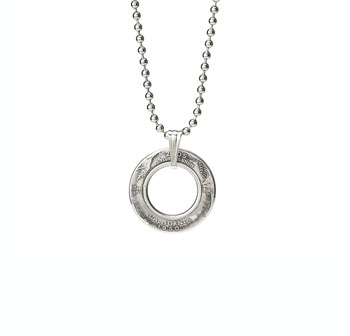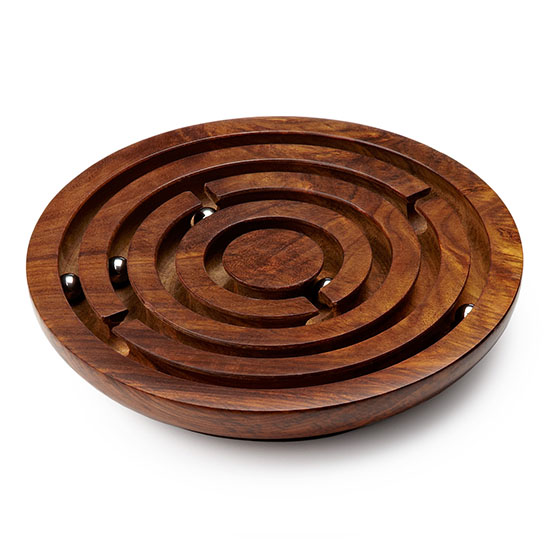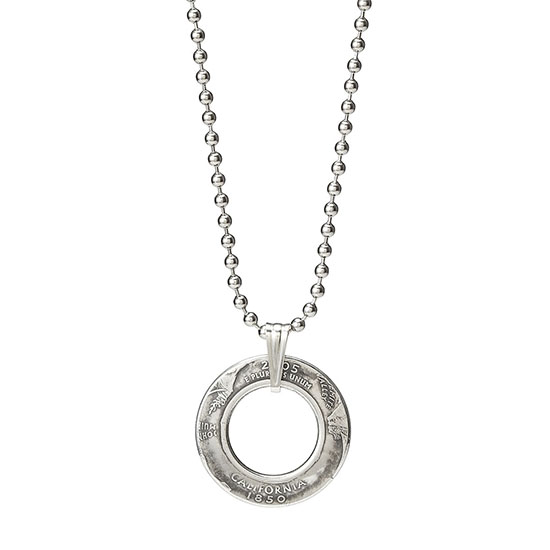 India Pale Ale (or IPA) did not get its name because it came from India, but because India is where it went. In the late 18th century, the East India Company was attempting to ship beer from England to its outposts in India. The journey took them all the way around the southern tip of Africa, and the time and the heat of the voyage would take its toll on the precious, liquid cargo. One success story, however, was October ale, a variety of beer with extra hops that was typically cellared for a couple years before serving, and which thrived under the conditions of the long journey. As more and more brewers began to see the profitability of this exportable beer, and as they began to produce it in larger volumes, it became more available and more popular domestically as well, and the popularity of India Pale Ale has continued for the following two-hundred years.
India Pale Ale (or IPA) did not get its name because it came from India, but because India is where it went. In the late 18th century, the East India Company was attempting to ship beer from England to its outposts in India. The journey took them all the way around the southern tip of Africa, and the time and the heat of the voyage would take its toll on the precious, liquid cargo. One success story, however, was October ale, a variety of beer with extra hops that was typically cellared for a couple years before serving, and which thrived under the conditions of the long journey. As more and more brewers began to see the profitability of this exportable beer, and as they began to produce it in larger volumes, it became more available and more popular domestically as well, and the popularity of India Pale Ale has continued for the following two-hundred years.
 Cow tipping is a legendary form of rural recreation, where teenagers sneak out late at night to a farmer’s field to give sleeping cows a push, knocking them right off of their spindly little legs. Where did this sport begin? Most likely, it was in the imaginations of people who have never spent any time around actual cows. From the window of a car that’s driving past a farm, cows look ridiculously top-heavy and easy to tip, but the facts undermine this first impression. For one thing, it’s almost impossible to sneak up on one, even at night. Cows work together to protect their herd, with each facing a different direction to be on alert against predators from any side. Secondly, cows weigh a lot and have a surprisingly low center of gravity. Add to that the fact that a cow would shift its weight against anyone trying to push it, and tipping one over becomes humanly impossible. And last but not least, cows don’t sleep standing up. Those who first thought of the idea may have mistakenly been thinking of the sleeping habits of horses.
Cow tipping is a legendary form of rural recreation, where teenagers sneak out late at night to a farmer’s field to give sleeping cows a push, knocking them right off of their spindly little legs. Where did this sport begin? Most likely, it was in the imaginations of people who have never spent any time around actual cows. From the window of a car that’s driving past a farm, cows look ridiculously top-heavy and easy to tip, but the facts undermine this first impression. For one thing, it’s almost impossible to sneak up on one, even at night. Cows work together to protect their herd, with each facing a different direction to be on alert against predators from any side. Secondly, cows weigh a lot and have a surprisingly low center of gravity. Add to that the fact that a cow would shift its weight against anyone trying to push it, and tipping one over becomes humanly impossible. And last but not least, cows don’t sleep standing up. Those who first thought of the idea may have mistakenly been thinking of the sleeping habits of horses.
 Normally we think of trees and flowers as the strong silent type, but that may just be because we don’t speak their language. Willow trees, for example, can warn each other about predators. When one is attacked by a wood-eating insect, it not only produces a chemical to make itself unpalatable to the bug, but it also puts out a pheromone that prompts surrounding willows to produce the same defensive chemical. Tobacco plants are the plant equivalent of being multi-lingual, and can actually respond to such distress calls put out from other plant species. But plant communication is not just limited to self-defense. They work together to time when their flowers will bloom, how to share soil nutrients and more. However, there is no word from science yet on the plant equivalent of “LOL.”
Normally we think of trees and flowers as the strong silent type, but that may just be because we don’t speak their language. Willow trees, for example, can warn each other about predators. When one is attacked by a wood-eating insect, it not only produces a chemical to make itself unpalatable to the bug, but it also puts out a pheromone that prompts surrounding willows to produce the same defensive chemical. Tobacco plants are the plant equivalent of being multi-lingual, and can actually respond to such distress calls put out from other plant species. But plant communication is not just limited to self-defense. They work together to time when their flowers will bloom, how to share soil nutrients and more. However, there is no word from science yet on the plant equivalent of “LOL.”
 The edges of a quarter might feel pretty groovy, but all of those ridges were once a serious weapon in the war on crime. When the United States first began minting its own coins, they were made using silver: a dollar coin contained a dollar’s worth of silver, etc. This makes a lot of sense, but it gave rise to a kind of criminal called a “coin clipper.” These thieves would shave off small amounts of the silver to keep for themselves, and then spend the coins as if they were worth their full value. The solution to this was those little grooves—called “reeded” edges—which made it immediately obvious when someone tried filing them down. These days, the metal in our coins has very little intrinsic value, yet the ridges remains as a tactile way of distinguishing between denominations.
The edges of a quarter might feel pretty groovy, but all of those ridges were once a serious weapon in the war on crime. When the United States first began minting its own coins, they were made using silver: a dollar coin contained a dollar’s worth of silver, etc. This makes a lot of sense, but it gave rise to a kind of criminal called a “coin clipper.” These thieves would shave off small amounts of the silver to keep for themselves, and then spend the coins as if they were worth their full value. The solution to this was those little grooves—called “reeded” edges—which made it immediately obvious when someone tried filing them down. These days, the metal in our coins has very little intrinsic value, yet the ridges remains as a tactile way of distinguishing between denominations.
 The arcade game got its start long before the digital video game cabinet swallowed its first quarter in the 1960s. And while there are plenty of candidates for “first arcade game,” one of the most likely was a game called bagatelle. Bagatelle began as early as the 1700s as a variation on billiards, and was a favorite of King Louis XIV. Players would use a billiard cue to knock balls from one end of a narrow table towards a series of cups at the other end. Over time, metal pins were added to the board as obstacles, and the full-sized cue stick was replaced with a spring-loaded rod. With the addition of coin operation and electric lights in the 1930s, and player-operated flippers in the 1940s, this sport of kings had evolved into the pinball machine of today.
The arcade game got its start long before the digital video game cabinet swallowed its first quarter in the 1960s. And while there are plenty of candidates for “first arcade game,” one of the most likely was a game called bagatelle. Bagatelle began as early as the 1700s as a variation on billiards, and was a favorite of King Louis XIV. Players would use a billiard cue to knock balls from one end of a narrow table towards a series of cups at the other end. Over time, metal pins were added to the board as obstacles, and the full-sized cue stick was replaced with a spring-loaded rod. With the addition of coin operation and electric lights in the 1930s, and player-operated flippers in the 1940s, this sport of kings had evolved into the pinball machine of today.
 You may have heard the old song about “the daring young man on the flying trapeze,” but not every trapeze is intended to fly. There’s the static trapeze, where the acrobat does tricks on a swing, but tries to do so with as little rocking movement as possible. There’s the swinging trapeze, where (as the name suggests) the acrobat get the suspended bar to move back and forth, and uses the momentum to do aerial tricks. What makes the flying trapeze different is that the performers don’t begin on the swing itself, but leap out to grab it from an elevated platform. This daredevil display was first performed in France in 1859, and was an immediate sensation. Its inventor was Jules Leotard, and the skintight costume he developed to maximize his flexibility while performing is still worn and bears his name today—the leotard. In fact, Leotard was such a popular phenomenon that that aforementioned song, “The Daring Young Man on the Flying Trapeze,” was written specifically about him in 1867, and (thanks in large part to its appearance in some popular cartoons) is still familiar 150 years later.
You may have heard the old song about “the daring young man on the flying trapeze,” but not every trapeze is intended to fly. There’s the static trapeze, where the acrobat does tricks on a swing, but tries to do so with as little rocking movement as possible. There’s the swinging trapeze, where (as the name suggests) the acrobat get the suspended bar to move back and forth, and uses the momentum to do aerial tricks. What makes the flying trapeze different is that the performers don’t begin on the swing itself, but leap out to grab it from an elevated platform. This daredevil display was first performed in France in 1859, and was an immediate sensation. Its inventor was Jules Leotard, and the skintight costume he developed to maximize his flexibility while performing is still worn and bears his name today—the leotard. In fact, Leotard was such a popular phenomenon that that aforementioned song, “The Daring Young Man on the Flying Trapeze,” was written specifically about him in 1867, and (thanks in large part to its appearance in some popular cartoons) is still familiar 150 years later.
 If this were a multiple choice question, the answer would have to be “All of the above,” because there are actually several teatimes throughout the day. Afternoon tea, as we think of it now, is usually credited to Anna Russell, Duchess of Bedford. Sometime in the 1840s, she began requesting a tea and refreshments to help stave off that afternoon “sinking feeling”, and invited her friends to enjoy it with her as well—thus giving birth to the tea party. This afternoon tea should not be confused, however, with “high tea.” High tea is a name for a substantial evening meal of hearty fare, traditionally enjoyed by the working class once their day’s labor was complete. And for those who weren’t satisfied with teatime merely in the afternoon and evening, an additional teatime can be enjoyed in the morning. Called “elevenses,” it offers tea and cakes as the perfect way to sustain you through that long gap between breakfast and lunch.
If this were a multiple choice question, the answer would have to be “All of the above,” because there are actually several teatimes throughout the day. Afternoon tea, as we think of it now, is usually credited to Anna Russell, Duchess of Bedford. Sometime in the 1840s, she began requesting a tea and refreshments to help stave off that afternoon “sinking feeling”, and invited her friends to enjoy it with her as well—thus giving birth to the tea party. This afternoon tea should not be confused, however, with “high tea.” High tea is a name for a substantial evening meal of hearty fare, traditionally enjoyed by the working class once their day’s labor was complete. And for those who weren’t satisfied with teatime merely in the afternoon and evening, an additional teatime can be enjoyed in the morning. Called “elevenses,” it offers tea and cakes as the perfect way to sustain you through that long gap between breakfast and lunch.
 “3… 2… 1… Blastoff!” It seems like the only way to prepare for a launch, right? But, no. At the time it was first used, the convention was simply to count up in the usual way: “1… 2… 3… Go!” When the countdown was first used in 1929, its purpose was not to precisely synchronize a team working together to create a complex event. Its purpose was the create suspense. And its originator was not a scientist, but the brilliant Austrian filmmaker Fritz Lang. Lang, best known for his movies Metropolis and M, was working on a science fiction film called Woman in the Moon that featured a dramatic rocket launch, preceded by a countdown of the final ten seconds before launch. Rocket scientist Wernher von Braun was a fan of the movie, and brought the countdown to zero with him when he came to America.
“3… 2… 1… Blastoff!” It seems like the only way to prepare for a launch, right? But, no. At the time it was first used, the convention was simply to count up in the usual way: “1… 2… 3… Go!” When the countdown was first used in 1929, its purpose was not to precisely synchronize a team working together to create a complex event. Its purpose was the create suspense. And its originator was not a scientist, but the brilliant Austrian filmmaker Fritz Lang. Lang, best known for his movies Metropolis and M, was working on a science fiction film called Woman in the Moon that featured a dramatic rocket launch, preceded by a countdown of the final ten seconds before launch. Rocket scientist Wernher von Braun was a fan of the movie, and brought the countdown to zero with him when he came to America.

